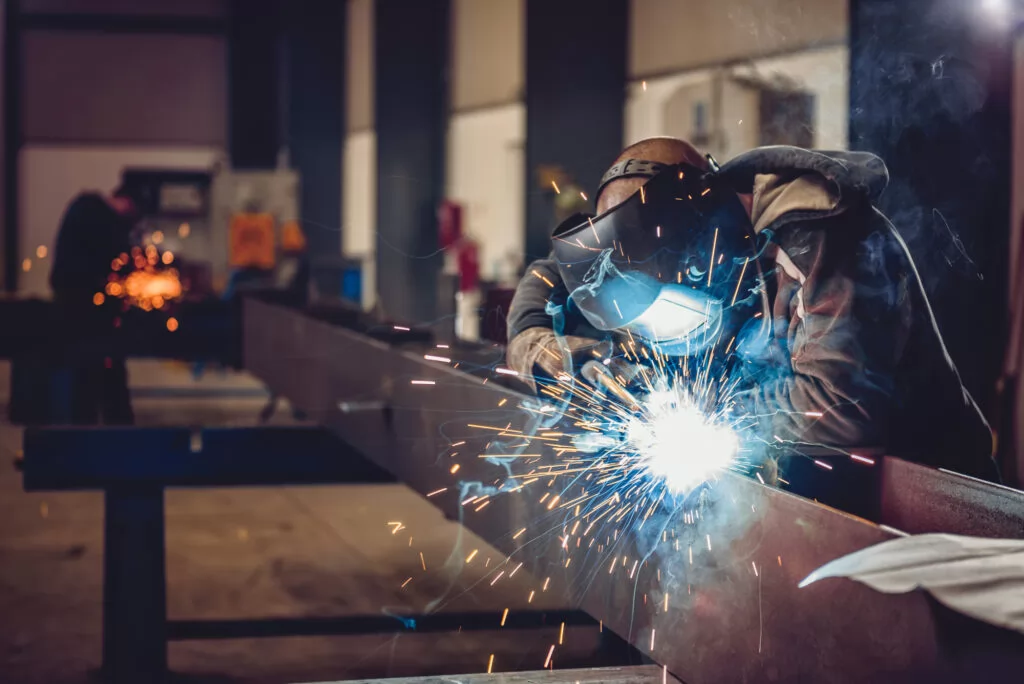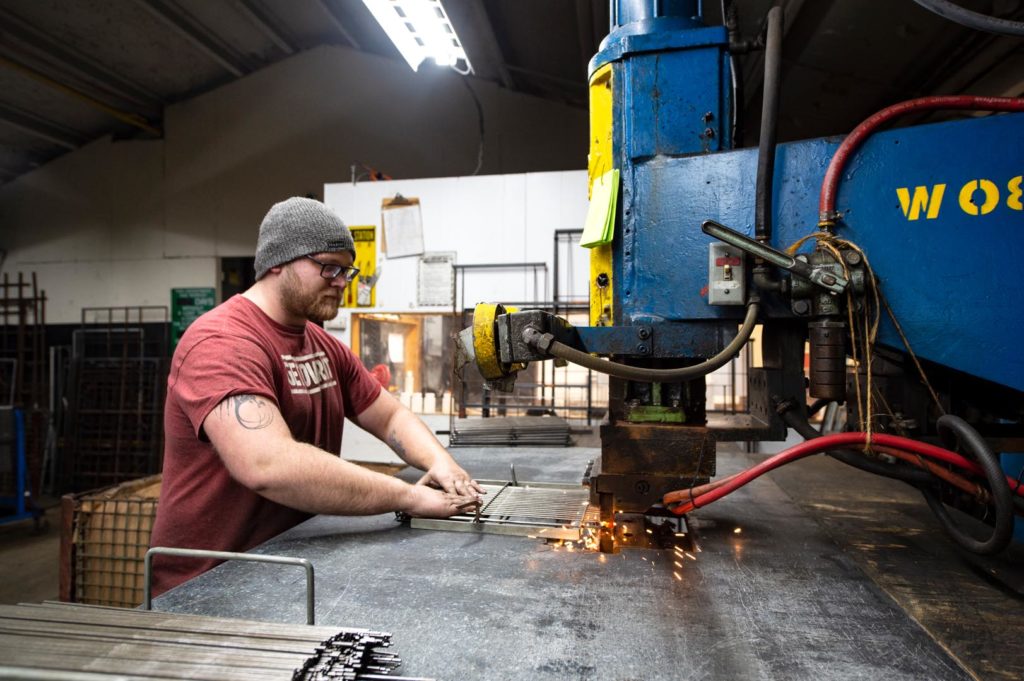Usual Welding Repair Service Issues and Exactly How to Address Them Effectively
Welding fixings commonly experience an array of issues that can jeopardize the stability of the last item. Usual troubles consist of poor penetration, porosity, and misalignment, to name a few. Each flaw provides one-of-a-kind obstacles that need details approaches for resolution. Recognizing these concerns is vital for welders aiming to boost their results and abilities. This conversation will check out these typical welding repair issues and reliable approaches to resolve them.
Inadequate Penetration
Insufficient infiltration happens when the weld steel stops working to completely fuse with the base product, leading to weak joints and possible structural failures. This problem frequently comes from insufficient warmth input, inaccurate electrode angle, or inappropriate welding speed. Welders might run into inadequate infiltration because of a miscalculation of the necessary criteria for a particular material density or kind. Furthermore, contamination on the base material's surface can impede effective bonding, intensifying the issue. To attend to inadequate infiltration, welders must assure ideal settings on their tools and preserve a clean job surface area. Regular examination of welds is advised to determine any deficiencies early, enabling prompt corrections and the prevention of compromised structural stability in bonded assemblies.
Porosity
Porosity is an usual problem in bonded joints that shows up as little gas bubbles caught within the weld metal. This flaw can jeopardize the stability of the weld, resulting in minimized toughness and prospective failing under anxiety. Belgrade Fabrication. Porosity normally occurs from contamination, dampness, or incorrect welding techniques, which enable gases to get away into the molten weld swimming pool. To resolve porosity, welders must assure correct surface area preparation, maintain a tidy workplace, and utilize ideal welding specifications. In addition, choosing the appropriate filler material and protecting gas can alleviate gas entrapment. Normal inspection and screening of welds can help determine porosity early, ensuring prompt corrective actions are taken, thereby maintaining the quality and dependability of the bonded framework
Misalignment
Misalignment in welding can develop from various variables, consisting of improper arrangement and thermal development. Understanding the origin is crucial for effective resolution. Numerous adjustment methods are readily available to straighten elements and ensure structural honesty.
Reasons for Misalignment
Welding imbalance commonly comes from a variety of underlying concerns that can compromise structural honesty. One main cause is inappropriate fit-up of components before welding, which can bring about spaces and unequal surface areas. Variants in thermal expansion during the welding process can additionally lead to distortion, especially if the materials being signed up with have various coefficients of development. Additionally, inadequate clamping and fixturing may fail to hold elements securely in position, resulting in movement during welding. Improperly maintained tools, including welding equipments and tools, might introduce incongruities in the weld grain, additional contributing to misalignment. Lastly, driver mistake, stemming from insufficient training or experience, can also play a significant role in producing misaligned welds.
Modification Strategies Offered
Addressing imbalance successfully needs a combination of restorative strategies customized to the particular issues at hand. One typical method is the use of jigs or fixtures to hold elements in the right position during welding, making sure constant alignment. Additionally, pre-heating the materials can help lower distortion and enhance fit-up. For significant misalignment, mechanical adjustment strategies, such as making use of hydraulic jacks or clamps, can be used to remedy the position prior to welding. Post-weld heat therapy may also be necessary to alleviate anxieties brought on by misalignment. Cautious evaluation and modification throughout the arrangement stage can protect against imbalance problems from becoming considerable troubles, advertising a smoother welding procedure and boosting total structural stability.
Distortion
Distortion is a common difficulty in welding that can arise from various factors, including unequal heating & cooling. Recognizing the root causes of distortion is essential for carrying out effective avoidance techniques. Addressing this issue not just enhances structural honesty but likewise improves the total quality of the weld.
Reasons for Distortion
When based on the extreme heat of welding, materials commonly undertake changes that can lead to distortion. This sensation mostly occurs from thermal expansion and tightening throughout the welding procedure. As the weld area heats up, the product broadens; upon air conditioning, it contracts, which can produce inner anxieties. Furthermore, uneven heating across a work surface can intensify these anxieties, causing bending or flexing. The kind of material also plays a substantial duty; metals with differing thermal conductivity and coefficients of expansion might react in different ways, bring about unpredictable distortions. Bad joint layout and poor fixturing can add to misalignment throughout welding, raising the chance of distortion. Recognizing these reasons is necessary for efficient welding fixing and avoidance techniques.
Avoidance Techniques
Effective prevention techniques for distortion during welding emphasis on regulating warm input and making certain proper joint style. Maintaining a regular warm input aids to minimize thermal growth and contraction, which can lead to distortion. Utilizing techniques such as preheating the work surface can additionally reduce the temperature level gradient, promoting consistent heating. Furthermore, choosing proper joint layouts, such as T-joints or lap joints, can boost security and lower tension focus. Executing proper fixturing to safeguard the workpieces in position better aids in keeping alignment throughout the welding process. Staggered welding sequences can disperse warm more uniformly, protecting against local distortion. By using these techniques, welders can significantly reduce the likelihood of distortion and enhance the total top quality of their welds.
Fracturing
Breaking is a common problem run into in welding repair services, frequently arising from different aspects such as incorrect cooling rates, material selection, or poor joint prep work. The incident of fractures can considerably jeopardize the honesty of the weld, bring about possible failures throughout operation. To resolve this problem, welders should first assess the origin, making sure that products work and suitably selected for the details application. Additionally, managing the cooling price throughout the welding process is crucial; rapid cooling can cause tension and lead to breaking. Appropriate joint design and prep work also add to lessening the risk. Executing these techniques can enhance weld high quality and durability, ultimately decreasing the likelihood of fracturing in ended up weldments.

Incomplete Fusion
A substantial concern in welding repair services is incomplete fusion, which occurs when the weld steel does not adequately bond with the base product or previous weld passes - Fabrication. This flaw can result in weak points in the joint, possibly jeopardizing the integrity of the bonded structure. Elements adding to insufficient fusion include inadequate warm input, incorrect welding strategy, and contamination of the surfaces being signed up with. To address this issue effectively, welders need to guarantee correct pre-weld cleaning and surface area preparation, along with change their welding parameters to attain sufficient infiltration and combination. Routine examination during the welding process can also assist identify insufficient blend early, permitting prompt corrective steps to improve the overall top quality of the weld
Overheating
While welding repair services can enhance structural integrity, overheating offers a substantial difficulty that can lead to product destruction. Too much warm throughout welding can change the mechanical residential or commercial properties of steels, causing decreased toughness, raised brittleness, and bending. This phenomenon is specifically crucial in high-stress applications where architectural integrity is vital. Recognizing overheating can include aesthetic inspections for discoloration or distortion, along with keeping an her comment is here eye on temperature level throughout the welding process. To reduce the risks related to overheating, welders must use appropriate methods, such as managing warmth input, readjusting traveling speed, and using suitable filler materials. Additionally, carrying out pre- and post-weld warm therapies can aid bring back product properties and enhance the total high quality of the fixing, making certain long-lasting performance and security.
Often Asked Concerns
What Are the Common Indications of a Welding Defect?

Exactly How Can I Examine My Welds for Quality?
To evaluate welds her explanation for quality, one can make use of visual evaluations, ultrasonic testing, and radiographic techniques. Each technique guarantees architectural honesty, identifies defects, and validates adherence to specified standards, ultimately boosting the reliability of the welded joints.
What Safety Precautions Should I Take While Welding?
When welding, one should focus on safety by putting on appropriate individual safety equipment, guaranteeing appropriate air flow, protecting flammable materials away, maintaining a tidy work space, and being conscious of surroundings to stop injuries and crashes.
Can I Repair a Weld Without Renovating the Entire Joint?
Repairing a weld without redoing the entire joint is feasible, relying on the damage (Montana Mobile Welding and Repair). Techniques such as grinding, adding filler product, or making use of a welding procedure can efficiently deal with particular defects while maintaining the surrounding structure
What Devices Are Essential for Efficient Welding Repairs?
Crucial devices for effective welding fixings consist of a welding machine, cable brush, grinder, safety gear, clamps, and filler materials. Each device plays an essential function in making certain high quality and safety throughout the repair service process. Porosity commonly develops from contamination, dampness, or incorrect welding strategies, which allow gases to get away right into the molten weld pool. Inadequately kept tools, including welding equipments and devices, may present incongruities in the weld bead, more adding to misalignment. When subjected to the extreme warm of welding, products typically go through adjustments that can lead to distortion. Breaking is a typical issue run into in welding fixings, frequently resulting from different factors such as inappropriate air conditioning rates, product selection, or inadequate joint preparation. A significant concern in welding repair work useful link is insufficient combination, which occurs when the weld steel does not appropriately bond with the base product or previous weld passes.
Comments on “Advanced weld correction methods from Belgrade Welding professionals”